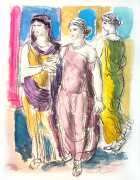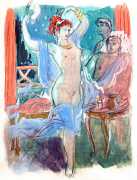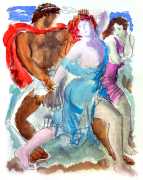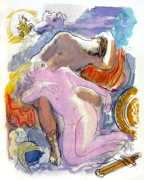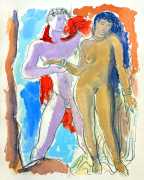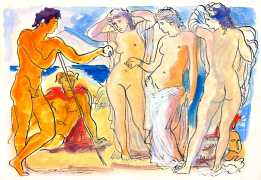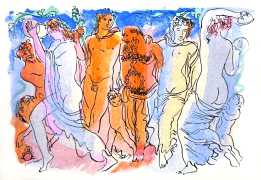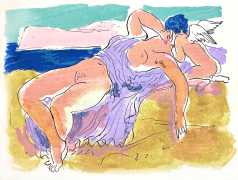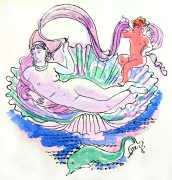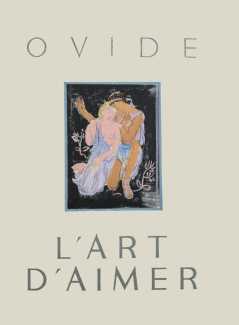
The Roman poet Ovid’s Ars Amatoria (The Art of Love or L’art d’aimer) is a classic of instruction about intimate relating, and even though written two thousand years ago (it is thought in 2CE) much of its teaching remains more or less pertinent, like not forgetting someone’s birthday and letting them miss you – but not too much.
Book One of Ars Amatoria was written to show a man how to find a woman. In Book Two, Ovid shows how to keep her. The third book, written two years after the first books were published, gives women advice on how to win and keep the love of a man. Rather tongue in cheek, Ovid likens love to military service, requiring the strictest obedience to the woman. He advises women to make their lovers artificially jealous so that they do not become neglectful through complacency.
Throughout his ironic discourse, Ovid never becomes ribald or obscene. ‘Embarrassing’ matters cannot be entirely excluded, for praecipue nostrum est, quod pudet, inquit, opus (what brings a blush is our particular business here). Things always end up in bed, but here too Ovid retains his style and his discretion. The end of the second book deals with the pleasures of simultaneous orgasm – odi concubitus, qui non utrumque resolvunt (I don’t like intercourse that doesn’t make both lovers come).
Appropriately for its subject, the Ars amatoria is composed in elegiac couplets rather than the dactylic hexameters more usually associated with the classic Latin didactic poem.
L’art d’aimer has been illustrated many times, and in 1946 it was Uzelac’s turn to be commissioned by the Swiss publisher Jean Landru, whose business and bookshop are still in existence in Chamonix. Uzelac produced a lively and colourful set of plates, beautifully reproduced in this limited edition.
The Uzelac-illustrated L’art d’aimer was produced in a limited, numbered and slipcased edition of 999 copies.


